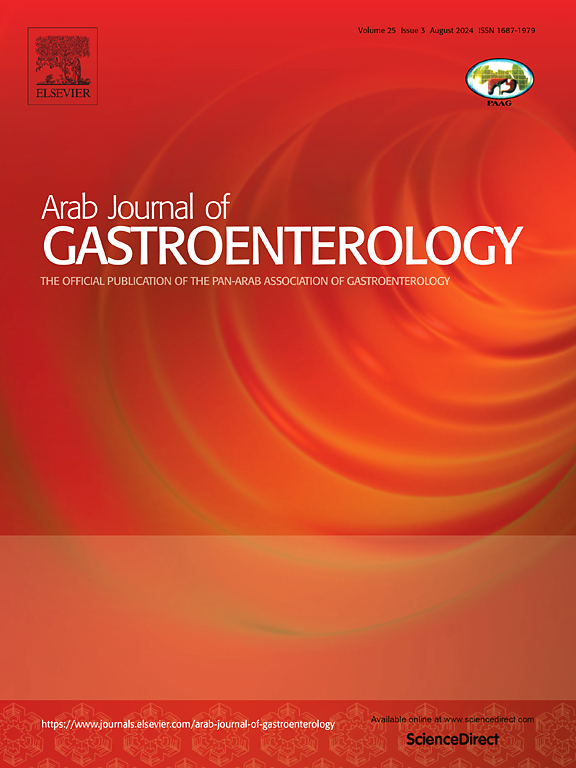一种预测胃食管反流病患者冠状动脉粥样硬化风险的新nomogram。
IF 1.1
4区 医学
Q4 GASTROENTEROLOGY & HEPATOLOGY
引用次数: 0
摘要
背景与研究目的:本研究建立了一种新的预测胃食管反流病(GERD)患者冠状动脉粥样硬化(CA)发生率的nomogram,并评价其预测价值。患者和方法:从重症监护医学信息市场IV (MIMIC-IV)数据库中共分析13658例GERD患者。患者按7:3的比例随机分为训练组(n = 9560)和验证组(n = 4098)。进行最小绝对收缩和选择算子(LASSO)回归分析以确定相关的风险变量。然后开发了一种图来预测胃食管反流患者CA的发生率。采用一致性指数、受试者工作特征曲线下面积、校准曲线和决策曲线分析对模型的性能进行评价。结果:LASSO回归确定了CA的9个潜在预测因子,并使用多元逻辑回归对这些预测因子进行评估并建立最终模型。一致性指数为0.750。训练队列和验证队列的曲线下面积分别为0.7500和0.7297。结论:年龄、白细胞计数、血红蛋白、平均红细胞血红蛋白、平均红细胞体积、钠、碳酸氢盐、肌酐和氯化物可作为CA的预测因素。所建立的nomogram心电图图为预测胃食管反流患者的CA提供了可靠和方便的工具。本文章由计算机程序翻译,如有差异,请以英文原文为准。
A novel nomogram for predicting the risk of coronary atherosclerosis in patients with gastroesophageal reflux disease
Background and study aims
This study developed a novel nomogram to predict the incidence of coronary atherosclerosis (CA) in patients with gastroesophageal reflux disease (GERD) and evaluated its predictive value.
Patients and methods
In total, 13,658 patients with GERD from the Medical Information Mart for Intensive Care IV (MIMIC-IV) database were analyzed. The patients were randomly divided into a training cohort (n = 9,560) and a validation cohort (n = 4,098) at a 7:3 ratio. Least absolute shrinkage and selection operator (LASSO) regression analyses were performed to identify associated risk variables. Then a nomogram was developed to predict the rate of CA in patients with GERD. The model’s performance was evaluated using the concordance index, area under the receiver operating characteristic curve, calibration curve, and decision curve analysis.
Results
LASSO regression identified nine potential predictors of CA. Multivariate logistic regression was used to evaluate these predictors and establish the final model. The concordance index was 0.750. The areas under the curve for the training and validation cohorts were 0.7500 and 0.7297, respectively.
Conclusion
Age, white blood cell count, hemoglobin, mean corpuscular hemoglobin, mean corpuscular volume, sodium, bicarbonate, creatinine, and chloride were identified as predictors of CA. The developed nomogram provides a reliable and convenient tool for predicting CA in patients with GERD.
求助全文
通过发布文献求助,成功后即可免费获取论文全文。
去求助
来源期刊

Arab Journal of Gastroenterology
Medicine-Gastroenterology
CiteScore
2.70
自引率
0.00%
发文量
52
期刊介绍:
Arab Journal of Gastroenterology (AJG) publishes different studies related to the digestive system. It aims to be the foremost scientific peer reviewed journal encompassing diverse studies related to the digestive system and its disorders, and serving the Pan-Arab and wider community working on gastrointestinal disorders.
 求助内容:
求助内容: 应助结果提醒方式:
应助结果提醒方式:


